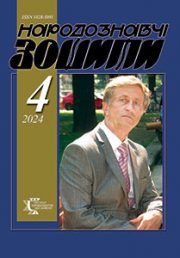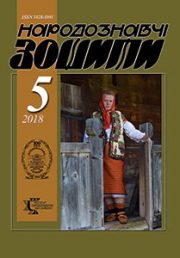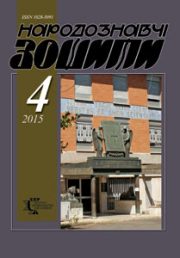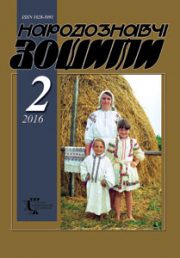The Ethnology Notebooks. 2025. № 4 (184), 821—824
UDK688.72:(069.5:39)](477/83-25)
DOI https://doi.org/10.15407/nz2025.04.821
TOYS IN THE ETHNOGRAPHIC COLLECTION OF THE DIDUSHCHYTSKYI MUSEUM
HERUS Lyudmyla
- ORCID ID: https://orcid.org/0000-0002-5931-3816
- Doctor of Sciences in History,
- Сandidate of Аrts(Ph. D), Head of Department,
- The Institute of Ethnology of the National Academy
- of Sciences of Ukraine,
- Departmentof Folk Art,
- 15, Svobody Avenue, 79000, Lviv, Ukraine,
- Contacts: e-mail: ludmilagerus@gmail.com
Abstract. Introduction. Collecting has become one of the characteristic manifestations of the importance of toys in culture and, in particular, in education and training. Collecting toys not only for sale or exchange, but also for professional purposes — educational, cultural, informational, and pedagogical — gradually developed and grew into a professional activity, passing through various stages — from private collections and thematic exhibitions in existing museums of other profiles to the creation of special toy museums in different countries around the world.
The purpose of this article is to highlight the preconditions for the appearance of toys in the Didushytskyi Museum, which was later, in 1940, transferred to Museum of Ethnography and Applied Art of the Ethnology Institute of the National Academy of Sciences of Ukraine (Lviv).
The object of the study is the historical and cultural background of the formation of the Didushytskyi Museum collection, and the subject is the artefacts of this collection.
The source baseconsisted of the toy collection of the MEAA ЕI NAS of Ukraine and materials from the archives of the Institute of Ethnology of the NAS of Ukraine.
The historical method has been use to determine the preconditions for the formation of the toy collection at the Didushytskyi Museum and to identify the influence of socio-economic factors on it. The artistic value of the toy artefacts from the Didushytskyi Museum collection was determined using the method of art analysis.
Keywords: culture, art, ethnography, museum, exhibition, collection, toy.
Received 29.07.2025
REFERENCES
- (1887). Program of the Ethnographic Exhibition in Ternopil. Work,49 [in Ukrainian].
- Hnatyuk, V. (1909). Word on time. Work,199 [in Ukrainian].
- (1912). To the exhibition in Kolomyia. Work,208 [in Ukrainian].
- Herus, L. (2004). Ukrainian folk toy. Lviv [in Ukrainian].
- Archive of the Institute of the National Academy of Sciences of Ukraine. F. I. Op. 1. Od. coll. 2 [in Ukrainian].
- Ivashkiv, Н. (2017). Pottery from Рokuttya: сeramic centres, аuthors, тypology and artistic peculiarities оf the earthenware. The Ethnology notebooks, 3, 646—675 [in Ukrainian].







